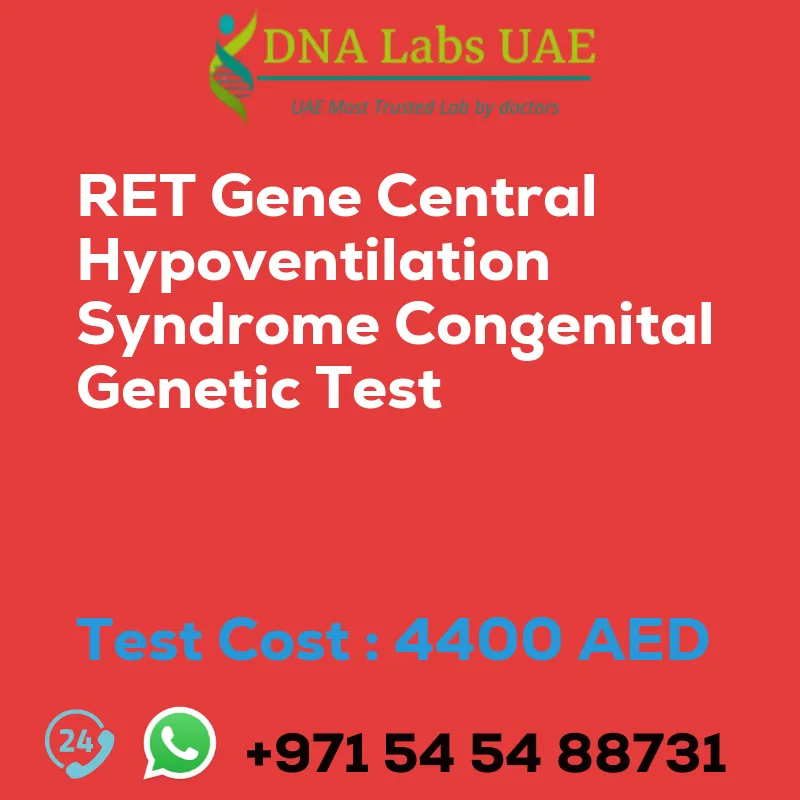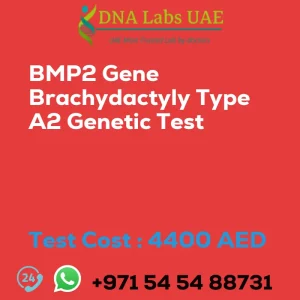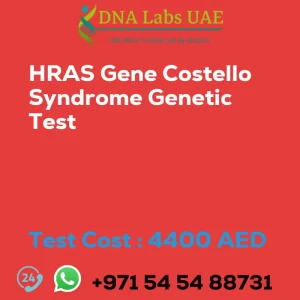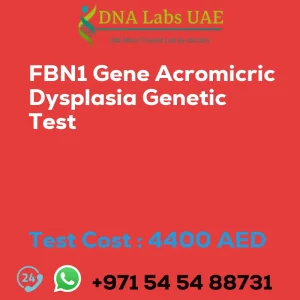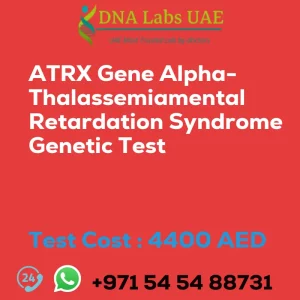RET Gene Central Hypoventilation Syndrome Congenital Genetic Test
Are you concerned about RET Gene Central Hypoventilation Syndrome Congenital (CCHS)? DNA Labs UAE offers a comprehensive genetic test to diagnose and manage this rare genetic disorder.
Test Details
RET gene central hypoventilation syndrome, congenital (CCHS) is a rare genetic disorder that affects the autonomic control of breathing. It is caused by mutations in the RET gene, which is involved in the development of the nervous system.
Our advanced Next-Generation Sequencing (NGS) technology allows us to analyze multiple genes simultaneously and identify mutations or variants associated with CCHS. By sequencing the DNA of an individual and comparing it to a reference genome, we can determine if a person has a mutation in the RET gene that is responsible for the disorder.
Test Components and Price
- Test Name: RET Gene Central Hypoventilation Syndrome Congenital Genetic Test
- Components: NGS Technology
- Price: 4400.0 AED
- Sample Condition: Blood or Extracted DNA or One drop Blood on FTA Card
- Report Delivery: 3 to 4 Weeks
- Test Type: Dysmorphology
- Doctor: Pediatrics
- Test Department: Genetics
Pre Test Information
Prior to undergoing the RET Gene Central Hypoventilation Syndrome Congenital Genetic Test, it is important to provide the clinical history of the patient. Additionally, a genetic counseling session will be conducted to draw a pedigree chart of family members affected by RET Gene Central Hypoventilation Syndrome.
Benefits of NGS Genetic Testing for CCHS
NGS genetic testing for CCHS can provide valuable information for diagnosis, treatment, and genetic counseling for affected individuals and their families. It can:
- Confirm the presence of a mutation in the RET gene
- Guide treatment and management options
- Be used for carrier testing in families with a history of CCHS
- Identify individuals who carry a mutation but may not show symptoms
Don’t wait any longer. Take control of your health and get tested for RET Gene Central Hypoventilation Syndrome Congenital today at DNA Labs UAE.
| Test Name | RET Gene Central hypoventilation syndrome congenital Genetic Test |
|---|---|
| Components | |
| Price | 4400.0 AED |
| Sample Condition | Blood or Extracted DNA or One drop Blood on FTA Card |
| Report Delivery | 3 to 4 Weeks |
| Method | NGS Technology |
| Test type | Dysmorphology |
| Doctor | Pediatrics |
| Test Department: | Genetics |
| Pre Test Information | Clinical History of Patient who is going for RET Gene Central hypoventilation syndrome, congenital NGS Genetic DNA Test. A Genetic Counselling session to draw a pedigree chart of family members affected with RET Gene Central hypoventilation syndrome, congenital NGS Genetic DNA Test gene RET |
| Test Details |
RET gene central hypoventilation syndrome, congenital (CCHS) is a rare genetic disorder that affects the autonomic control of breathing. It is caused by mutations in the RET gene, which is involved in the development of the nervous system. Next-generation sequencing (NGS) genetic testing is a method used to analyze multiple genes simultaneously and identify mutations or variants that may be associated with a particular condition. In the case of CCHS, NGS genetic testing can be used to identify mutations in the RET gene that are responsible for the disorder. NGS testing involves sequencing the DNA of an individual and comparing it to a reference genome to identify any differences or mutations. This can help determine if a person has a mutation in the RET gene that is associated with CCHS. NGS genetic testing for CCHS can be useful for diagnostic purposes, as it can confirm the presence of a mutation in the RET gene and help guide treatment and management options. It can also be used for carrier testing in families with a history of CCHS, as it can identify individuals who carry a mutation but may not show symptoms of the disorder themselves. Overall, NGS genetic testing for RET gene central hypoventilation syndrome, congenital can provide valuable information for diagnosis, treatment, and genetic counseling for affected individuals and their families. |

